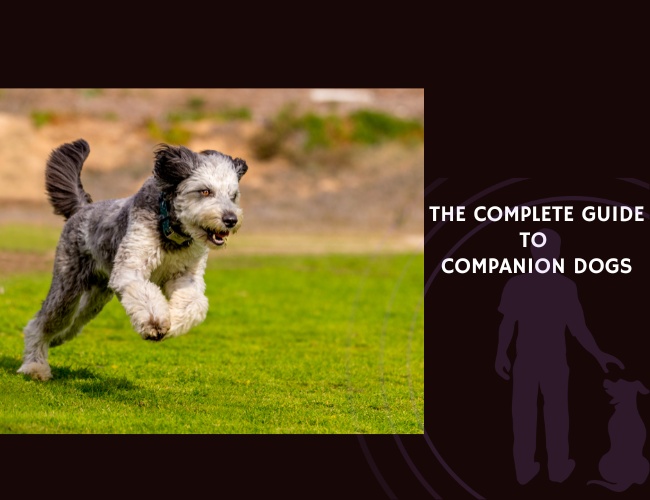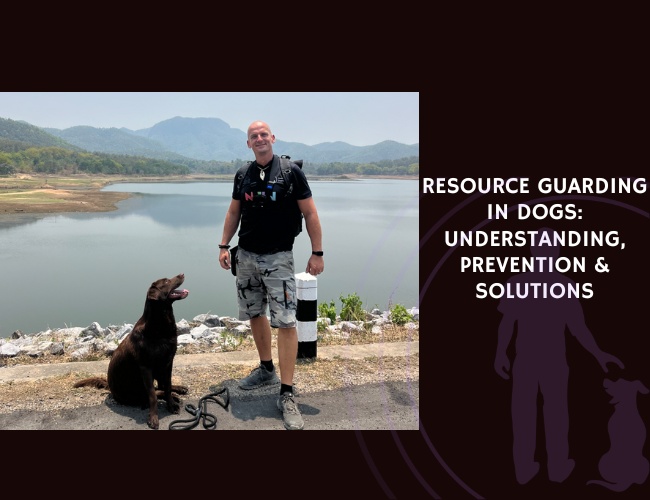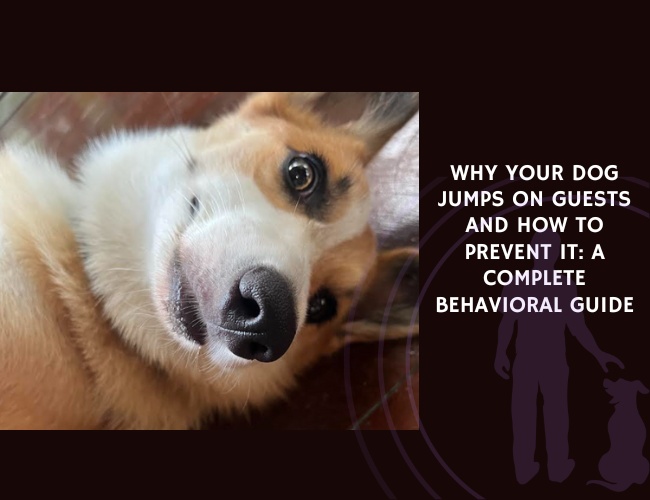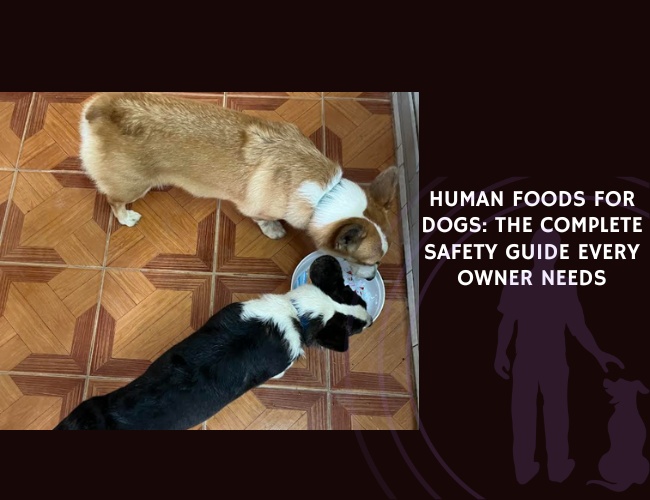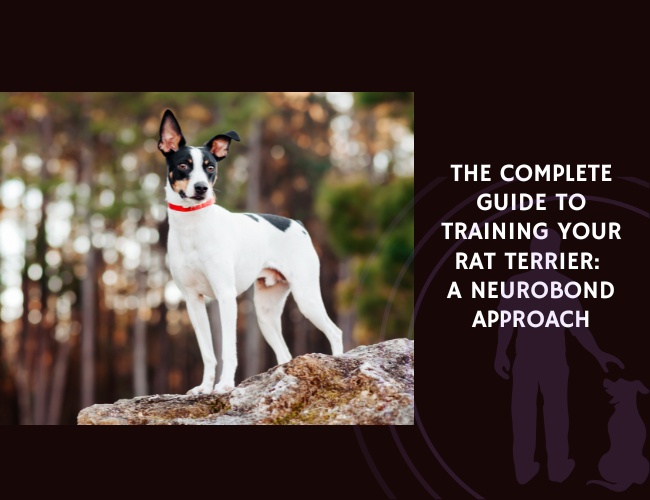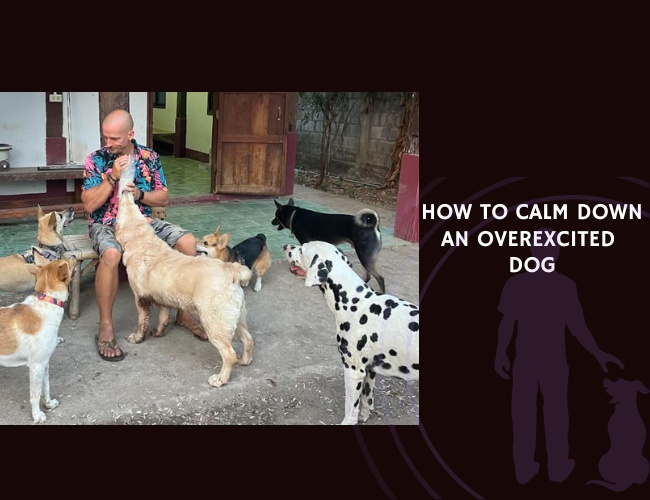Introduction: The Journey from Wolf to Your Couch
Did you know that the warm, trusting gaze your dog gives you actually triggers the same bonding hormone that connects mothers to their babies? This remarkable biological connection tells a story that began over 20,000 years ago, when our ancestors first formed partnerships with wolves that would eventually become the devoted companions curled up on our sofas today.
Companion dogs represent something truly special in the animal kingdom – they’re the only species specifically evolved to read human emotions, understand our gestures, and provide the emotional support we often don’t even realize we need. Unlike their working cousins who herd sheep or retrieve game, companion dogs have one primary job: being your best friend. And science shows they’re remarkably good at it.
Let us guide you through understanding these remarkable animals, from their ancient origins to the modern science of why your furry friend seems to know exactly when you need a cuddle. Whether you’re considering adding a companion dog to your family or deepening your bond with your current four-legged friend, this comprehensive guide will help you understand what makes these relationships so special. 🐾
Character & Behavior: Understanding Your Dog’s Unique Personality
The Seven Core Personality Traits
Every companion dog is unique, but research has identified seven fundamental personality traits that shape how your dog experiences and interacts with the world. Understanding these traits helps you recognize your dog’s individual needs and strengths.
Fearfulness and insecurity manifest differently across breeds and individuals. You might notice your normally confident Cavalier King Charles Spaniel becoming anxious during thunderstorms, while your neighbor’s Maltese shows fear around unfamiliar people. This trait isn’t a character flaw – it’s a natural variation that requires patience and understanding.
Energy and activity levels vary dramatically between companion breeds. While a Pug might be content with a leisurely stroll around the block, a Papillon often displays surprising athleticism for such a small package. Recognizing your dog’s energy needs prevents both under-stimulation (leading to destructive behaviors) and over-exertion.
Training focus reflects your dog’s ability to concentrate and learn. Toy Poodles often excel here, showing remarkable problem-solving abilities despite their diminutive size. Meanwhile, breeds like the Shih Tzu might require more creative training approaches – not because they’re less intelligent, but because they were bred for companionship rather than task completion.
Reading Your Dog’s Emotional States
Your companion dog communicates constantly through a rich vocabulary of body language, and learning to read these signals strengthens your bond immeasurably. A relaxed tail wag tells a different story than a stiff, high wag – the first says “I’m happy and comfortable,” while the second might indicate alertness or even anxiety.
Facial expressions in dogs are more nuanced than we often realize. That “guilty” look isn’t actually guilt – it’s appeasement behavior, your dog’s way of saying “I can see you’re upset, and I want to make peace.” The soft eyes, lowered head, and pulled-back ears create an expression we interpret through our human lens, but understanding its true meaning helps us respond more appropriately.
Stress signals are particularly important to recognize. Lip licking when there’s no food around, yawning when not tired, or “shaking off” as if wet when completely dry – these are your dog’s ways of saying “I’m feeling overwhelmed.” Recognizing these subtle communications allows you to intervene before anxiety escalates.
The beauty of companion dogs lies in their individual personalities emerging within breed tendencies. Your Bichon Frise might be unusually independent, or your typically aloof Pekingese might be a velcro dog. These variations make each relationship unique and special. 🧡
Vocalization & Communication: Understanding How Your Companion Dog “Talks”
The Language of Barks, Whines, and Growls
Your companion dog’s vocalizations are far more sophisticated than simple noise-making. Research reveals that dogs modulate their barks differently depending on context – a stranger-alert bark has distinct acoustic properties from a play bark, and most owners can intuitively distinguish between them.
Barking patterns vary significantly among companion breeds. Breeds like the Maltese and Yorkshire Terrier tend toward higher-pitched, more frequent barking – a trait that made them excellent watchdogs in their historical roles. Meanwhile, breeds like the Cavalier King Charles Spaniel typically bark less frequently, reflecting their breeding for quiet companionship in royal courts.
Whining and whimpering serve different communicative functions. A high-pitched whine often indicates excitement or anticipation (think of the sound your dog makes when you pick up the leash), while lower, more plaintive whines might signal discomfort or anxiety. During separation, whining combined with an absence of barking often indicates fear and anxiety rather than frustration.
Growling is perhaps the most misunderstood vocalization. It’s not aggression – it’s communication. A growl says “I’m uncomfortable, please give me space.” Punishing growling removes this warning system, potentially leading to bites “without warning.” Instead, respect the growl and address what’s causing your dog’s discomfort.
Beyond Voice: Multi-Modal Communication
Companion dogs don’t rely on voice alone. They’ve evolved remarkable abilities to read human gestures and facial expressions – skills that even our closest primate relatives don’t possess to the same degree.
Eye contact and mutual gazing create a powerful bonding experience. When you and your dog look into each other’s eyes, both of your brains release oxytocin – the same hormone involved in mother-infant bonding. This biological response, unique in the animal kingdom outside of human relationships, helps explain the profound connections we form with our dogs.
Body positioning speaks volumes. A play bow (front end down, rear end up) is universal dog language for “let’s have fun!” Meanwhile, a dog turning their back to you isn’t rudeness – it’s often a sign of trust, showing they feel safe enough to not watch you constantly.
Your companion dog is always “talking” to you through this rich tapestry of signals. Learning their language transforms your relationship from simple coexistence to true communication and understanding.
Training & Education: Building a Learning Partnership
Understanding How Companion Dogs Learn
Training your companion dog isn’t about dominance or being the “alpha” – modern science has thoroughly debunked these outdated concepts. Instead, it’s about creating a learning partnership based on clear communication and positive associations.
Breed-specific learning styles significantly impact training success. Toy breeds often respond better to gentle, reward-based methods with frequent breaks, as their small size means they tire more quickly. A Pomeranian might lose focus after 5-10 minutes, while a Havanese might maintain attention slightly longer. Working with, rather than against, these natural tendencies makes training enjoyable for both of you.
Motivation varies dramatically among companion breeds. While a Pug might be highly food-motivated (sometimes to a fault!), a Japanese Chin might find praise and play more rewarding. Understanding what drives your individual dog transforms training from a chore into a bonding experience.
Socialization windows are critical for companion dogs. Between 3-14 weeks, puppies are maximally receptive to new experiences. However, don’t despair if you’ve adopted an older dog – while this window is optimal, dogs continue learning throughout their lives. It just requires more patience and positive associations.
Addressing Common Companion Dog Challenges
Companion dogs face unique training challenges related to their size and breeding purpose. Small dog syndrome isn’t a real syndrome – it’s often the result of humans inadvertently reinforcing unwanted behaviors because they seem “cute” or non-threatening in a small dog.
House training can be particularly challenging for toy breeds, partly due to their small bladders and faster metabolisms. A Chihuahua physically cannot “hold it” as long as a larger dog. Frequent opportunities and celebrating successes rather than punishing accidents creates positive associations with appropriate elimination.
Resource guarding sometimes develops when companion dogs feel their small size makes them vulnerable. Teaching “trade” games where giving up one resource results in receiving something better builds confidence and reduces guarding behaviors.
Remember, your companion dog wants to please you – they just need clear, consistent communication about your expectations. Patience and positive reinforcement build a trusting relationship where learning becomes a joyful shared experience. 😄
Health Concerns: Keeping Your Companion Dog Thriving
Breed-Specific Health Considerations
Understanding your companion dog’s potential health challenges allows for proactive care that can significantly extend both lifespan and quality of life. Each breed carries genetic predispositions, but knowledge empowers prevention.
Brachycephalic breeds (Pugs, French Bulldogs, Shih Tzus) face unique respiratory challenges. Brachycephalic Obstructive Airway Syndrome (BOAS) isn’t just “normal for the breed” – it’s a serious condition requiring careful management. You might notice your Pug’s adorable snorting, but when breathing becomes labored or they struggle in warm weather, veterinary intervention is crucial. Weight management is particularly critical, as even small amounts of excess weight dramatically worsen breathing difficulties.
Dental disease disproportionately affects small companion breeds. Their teeth are often crowded in small mouths, creating perfect bacterial breeding grounds. Regular dental care isn’t cosmetic – it’s essential for preventing heart, kidney, and liver disease caused by bacterial spread from infected gums.
Luxating patellas (kneecaps that slip out of place) commonly affect breeds like Yorkshire Terriers and Pomeranians. You might notice occasional skipping or holding up a back leg during walks. While mild cases might not require surgery, maintaining ideal weight and appropriate exercise prevents progression.
The Obesity Epidemic in Companion Dogs
Obesity has become the number one health threat to companion dogs, with certain breeds showing alarming predisposition. Pugs top the list, but the problem extends across all companion breeds.
Food motivation gone wrong – many companion breeds were selected for their food-driven nature, making them easier to train with treats. This same trait, combined with those irresistible begging eyes, creates a perfect storm for overfeeding. Your Cavalier King Charles Spaniel isn’t actually hungry all the time – they’ve just learned that looking cute equals treats.
Metabolic differences mean companion dogs often require fewer calories than owners expect. A 10-pound Maltese might need only 200-300 calories daily – that’s less than many single human snacks! Those “just one bite” table scraps can quickly constitute a significant portion of their daily needs.
Exercise challenges compound the problem. Urban living often means less free running, while small size might lead owners to underestimate exercise needs. Twenty minutes of sniffing provides mental stimulation equivalent to an hour’s walk – incorporating “sniff walks” helps manage weight while enriching your dog’s life.
Mental Health and Anxiety Disorders
Companion dogs’ close bonds with humans make them particularly susceptible to anxiety disorders, especially separation-related problems. Understanding these conditions as medical issues rather than behavior problems changes how we approach treatment.
Separation anxiety affects a significant percentage of companion dogs. It’s not spite or revenge – it’s genuine panic. Dogs with separation anxiety experience the canine equivalent of a panic attack when left alone. Symptoms like destructive behavior, excessive vocalization, and inappropriate elimination typically begin within minutes of departure.
Noise sensitivity represents the most common anxiety trait in companion dogs. Urban environments, with their constant sirens, construction, and traffic, can overwhelm sensitive individuals. Creating safe spaces and gradual desensitization helps, but some dogs benefit from anti-anxiety medications during particularly challenging periods.
Your companion dog’s mental health is just as important as their physical wellbeing. Recognizing and addressing anxiety improves quality of life for everyone in the household. 🧠
Separation Anxiety Solutions: From Panic to Peace
Understanding the Roots of Separation Distress
Separation anxiety isn’t a behavior problem you can punish away – it’s a panic disorder requiring compassionate, systematic treatment. Your Cavalier King Charles Spaniel isn’t destroying your couch from spite; they’re experiencing genuine terror that their beloved human has disappeared forever.
Different types of separation distress require different approaches. True separation anxiety involves panic when separated from a specific person, while isolation distress occurs when the dog is left completely alone. Some dogs show barrier frustration – they’re fine if you’re home but panic when confined. Understanding which type affects your dog shapes your treatment plan.
Risk factors help predict and prevent problems. Dogs adopted during COVID lockdowns, where owners were constantly present, show higher rates of separation anxiety as routines normalize. Puppies who never learned independence, dogs with multiple rehoming experiences, and those with genetic predispositions (certain lines of Cavaliers, for instance) need proactive prevention.
Step-by-Step Desensitization Protocols
Systematic desensitization remains the gold standard for treating separation anxiety. This isn’t a quick fix – expect 2-6 months of consistent work – but the results transform lives.
Start below threshold means finding a duration your dog can handle without panic. For severely affected dogs, this might be literally one second. You step outside and immediately return before anxiety begins. Yes, it seems absurdly simple, but you’re rewiring a panicked brain.
Incremental increases follow the “3 successful repetitions” rule. Once your dog remains calm for one second three times, increase to two seconds. This feels painfully slow, but rushing guarantees setbacks. Your Maltese’s brain needs time to build new neural pathways associating alone time with safety rather than panic.
Departure cue desensitization addresses the anticipatory anxiety. Dogs learn that keys jingling, shoes going on, or you reaching for your purse means abandonment is imminent. Practice these cues without leaving – jingle keys while watching TV, put on your coat then sit down for coffee. Break the predictive association between these cues and your departure.
The “boring departure” protocol removes emotional peaks. No long, guilty goodbyes that telegraph your anxiety. Simply leave. No “be good!” or “Mommy will be right back!” Your calm, matter-of-fact departure communicates that this is no big deal. Returns are equally boring – ignore your dog for the first minute, no matter how excited they are.

Alone Time Training for Puppies: Prevention is Everything
Teaching puppies to be comfortable alone prevents future separation anxiety. This investment during puppyhood saves years of potential struggle.
The independence schedule starts from day one. Even if you’re home constantly, create artificial separations. Use baby gates so your puppy can see you but can’t follow constantly. This teaches a crucial lesson: you exist even when they can’t touch you.
Crate training as sanctuary builds positive alone associations. Never use crates as punishment. Instead, feed meals in crates, hide special treats that only appear in crates, and practice “crate games” where going in earns rewards. Your Havanese puppy should view their crate as their personal paradise, not a prison.
Graduated alone time follows a structured progression:
- Week 1-2: Seconds to minutes in a separate room while you’re home
- Week 3-4: 5-15 minute departures
- Week 5-6: 30-45 minute absences
- Week 7-8: 1-2 hour departures
- Week 9+: Building to full workday if needed
Remember, companion breeds mature slowly emotionally. Your 8-week-old Shih Tzu puppy has the emotional regulation of a toddler. Expectations should match developmental capacity.
Technology Solutions and Environmental Management
Modern technology offers unprecedented support for separation anxiety management, though it supplements rather than replaces training.
Camera systems let you monitor without interfering. Watch for early stress signs – pacing, whining, excessive panting. Many cameras include two-way audio, but use cautiously – your voice without your presence might increase frustration. Cameras also provide peace of mind and documentation of progress.
Automated treat dispensers create positive associations with alone time. Schedule random treat deliveries during absences, making your departure predict good things. Some dispensers include cameras and remote control, letting you reward calm behavior in real-time.
Calming soundscapes mask triggering noises and provide comfort. Classical music specifically composed for dogs (yes, this exists!) shows measurable calming effects. Avoid regular TV – sudden loud noises or doorbells in shows can trigger anxiety. White noise or specially designed dog relaxation music works better.
Pheromone diffusers (like Adaptil) release synthetic versions of calming pheromones mothers produce when nursing. While not universally effective, many dogs show reduced anxiety when these are used consistently. Place diffusers near your dog’s safe space, not by doors where departure anxiety peaks.
When Medication Becomes Necessary
Sometimes, anxiety is too severe for behavior modification alone. Medication isn’t failure – it’s a tool that makes learning possible.
Signs medication might help:
- Panic begins immediately upon departure
- Self-injury from escape attempts
- Inability to eat or drink when alone
- No progress after 6-8 weeks of consistent training
- Anxiety so severe the dog can’t learn
Medication options range from situational to daily:
- Situational medications like trazodone or gabapentin help during specific challenges (moving homes, owner travel)
- Daily medications like fluoxetine or clomipramine reduce overall anxiety, making training more effective
- Natural supplements (L-theanine, melatonin) might help mild cases but rarely suffice for true separation anxiety
Medication is a bridge, not a destination. It reduces anxiety enough for behavior modification to work. Most dogs can eventually wean off medication once new neural pathways are established, though some benefit from long-term support. There’s no shame in either path.
Creating Successful Departure Routines
Predictable routines reduce anxiety by removing uncertainty. Your dog might still dislike departures but knowing what to expect prevents panic.
The 30-minute wind-down begins well before departure. Reduce interaction and excitement gradually. Take your dog for a calm walk (not an exciting run), return home, and let them settle. This prevents departures from representing an abrupt shift from engagement to abandonment.
The departure ritual should be identical every time:
- Place your dog in their safe space with a special toy or treat puzzle
- Turn on calming music or white noise
- Adjust lighting if needed (some dogs prefer darkness, others need light)
- Leave without fanfare
- Ensure your scent remains (worn t-shirt in their bed)
The “special departure treat” only appears when you leave. Kong toys stuffed with frozen treats that take 20-30 minutes to consume work perfectly. By the time they finish, the peak anxiety period has passed. Your Pug learns: humans leaving = special treat time!
Success Stories and Realistic Timelines
Understanding typical progress prevents discouragement when improvement feels slow.
Mild cases (dog is stressed but not panicked) often show significant improvement within 4-6 weeks. A Cavalier who whines for 5 minutes then settles might achieve comfortable 4-hour absences within two months of consistent training.
Moderate cases (destructive behavior, vocalization throughout absence) typically need 3-4 months of combined behavior modification and possibly medication. Expect setbacks – progress isn’t linear. Your Havanese might handle 2 hours one week, then regress to 30 minutes the next. This is normal, not failure.
Severe cases (self-injury, complete inability to be alone) require 6-12 months of intensive intervention, almost always including medication. Success might mean achieving 2-3 hour absences rather than full workdays. Dog daycare or pet sitters might remain necessary for longer absences.
Remember: any improvement is success. Your chronically anxious Maltese managing 30 minutes alone calmly is as significant an achievement as another dog managing 8 hours. Celebrate every victory. 🧡
Advanced Brachycephalic Breed Management: Daily Life with Flat-Faced Friends
Understanding the Daily Reality of BOAS
Living with a brachycephalic companion dog means becoming an expert in respiratory management. Your Pug, French Bulldog, or Shih Tzu isn’t just “snorty” – they’re navigating life with anatomical challenges that affect every aspect of their day.
The anatomy behind the struggle helps you understand what your dog faces. Imagine breathing through a coffee stirrer while wearing a face mask – that’s your brachycephalic dog’s reality. Stenotic nares (pinched nostrils), elongated soft palate, and often a hypoplastic trachea (narrow windpipe) create a perfect storm of breathing difficulty.
Daily impact assessment becomes second nature. You’ll learn to read breathing patterns like other owners read body language. Rapid, shallow breathing might indicate overheating. Increased snoring could signal weight gain of just a pound or two. Changes in breathing during sleep might warn of worsening BOAS before crisis hits.
Summer Cooling Strategies and Temperature Monitoring
Heat is the enemy of brachycephalic breeds. While other dogs cool themselves through panting, your flat-faced friend’s compromised airways make this inefficient and dangerous.
The temperature danger zone starts lower than you’d expect. While other dogs might be comfortable at 75°F (24°C), your French Bulldog may already show heat stress. Above 80°F (27°C), even minimal activity becomes dangerous. Humidity compounds the problem – 70°F with high humidity can be as dangerous as 85°F in dry conditions.
Active cooling strategies go beyond simply avoiding heat:
- Cooling vests work through evaporation, but monitor carefully – wet fur can trap heat if the vest becomes warm
- Cooling mats provide relief indoors, but ensure they’re not too cold, which can cause rapid body temperature changes
- Strategic grooming removes insulating undercoat, but never shave completely – skin needs protection from sun
- Indoor exercise alternatives during summer months: puzzle feeders, hide-and-seek, training sessions in air conditioning
The “5-minute rule” for summer walks: If you can’t comfortably hold your hand on pavement for 5 seconds, it’s too hot for any walk. Early morning (before 7 AM) or late evening (after 9 PM) often provide the only safe windows.
Emergency cooling protocols save lives:
- Move to air conditioning immediately
- Offer room temperature (not ice cold) water
- Apply cool (not cold) wet towels to paw pads and belly
- Fan to increase evaporation
- Monitor for improvement within 5-10 minutes
- If no improvement, emergency vet immediately
Never submerge an overheated brachycephalic dog in cold water – the shock can cause cardiovascular collapse.
Safe Exercise Modifications
Exercise remains crucial for brachycephalic breeds, particularly given their predisposition to obesity. The key is working smarter, not harder.
The “talk test” gauges safe exercise intensity. You should be able to maintain conversation during your walk without becoming breathless yourself – if you can, your dog’s pace is probably appropriate. Your Pug isn’t lazy; they’re conserving oxygen.
Interval training prevents oxygen debt. Walk for 3-5 minutes, then rest for 1-2 minutes. This pattern allows recovery before distress accumulates. Ten intervals of 3-minute walks often provide better exercise than one 30-minute continuous walk.
Mental exercise substitution reduces physical demands while maintaining stimulation:
- Scent work requires minimal physical effort but significant mental energy
- Training new tricks in short sessions
- Food puzzles that require problem-solving, not physical exertion
- “Find it” games with hidden treats around the house
Swimming considerations are complex. While swimming provides low-impact exercise, many brachycephalic dogs struggle with water. Their front-heavy build and breathing difficulties make drowning risk significant. If swimming, always use a properly fitted life jacket and never leave unattended.
Sleep Positioning and Breathing Monitoring
Nighttime presents unique challenges for brachycephalic breeds. Sleep apnea isn’t just a human condition – your French Bulldog might stop breathing multiple times nightly.
Optimal sleeping positions can literally be lifesaving:
- Elevated head positioning reduces soft palate obstruction
- Orthopedic beds with raised edges allow comfortable chin-propping
- Some dogs benefit from donut-shaped beds that support head elevation
- Never encourage back sleeping – this position worsens airway collapse
Monitoring breathing patterns during sleep reveals BOAS progression:
- Normal: Quiet breathing with occasional soft snoring
- Concerning: Loud snoring with periodic gasping
- Dangerous: Breathing stops for several seconds, followed by gasping awakening
Environmental modifications for better sleep:
- Humidifiers help in dry climates but monitor for excess moisture
- Air purifiers reduce allergens that worsen breathing
- Cool sleeping areas (65-68°F) ease respiratory effort
- White noise machines mask breathing sounds that might disturb light-sleeping owners while still allowing you to monitor for distress
Warning Signs Requiring Emergency Veterinary Care
Knowing when breathing difficulty becomes an emergency saves lives. Brachycephalic dogs can deteriorate rapidly from stable to critical.
Immediate emergency indicators:
- Blue, purple, or gray gums or tongue (cyanosis)
- Collapse or inability to stand
- Extreme neck extension attempting to breathe
- Continuous open-mouth breathing at rest
- Foaming at the mouth
- Breathing rate over 40 breaths per minute at rest
- Temperature over 104°F (40°C)
Progressive warning signs suggesting veterinary evaluation within 24 hours:
- Increased breathing effort during previously tolerated activities
- New or worsening snoring
- Exercise intolerance developing over days/weeks
- Gagging or retching without vomiting
- Changes in bark or voice
- Reluctance to lie down (staying upright to breathe easier)
Pre-Purchase Health Evaluations
If considering a brachycephalic breed, thorough pre-purchase evaluation can prevent heartbreak and financial strain.
Essential health checks before purchasing:
- Nostril assessment: Nostrils should be open and round, not slits. Pinch test: gently pinch nostrils closed for 1 second – healthy puppies immediately open mouth to breathe
- Exercise tolerance test: Play with puppy for 5 minutes – heavy panting or lying down suggests problems
- Listen to breathing: At rest, breathing should be nearly silent. Loud breathing in a calm puppy predicts future problems
- Check parents: Meet both parents if possible. Their breathing quality predicts offspring issues
- Veterinary examination: Pre-purchase vet check specifically evaluating BOAS markers
Breeder red flags:
- Describing loud breathing as “normal for the breed”
- Unwillingness to provide health testing results
- Multiple litters of extreme brachycephalic types
- Puppies kept in hot environments to “toughen them up”
- No discussion of BOAS risks
Insurance and Financial Planning
Brachycephalic breeds require different financial planning than other companion dogs.
Insurance considerations:
- Many insurers exclude BOAS-related claims as “pre-existing conditions”
- Premiums for brachycephalic breeds often cost 20-40% more
- Read exclusions carefully – “breathing problems” might exclude everything respiratory
- Consider insurers specializing in brachycephalic breeds
- Start insurance before any breathing issues are documented
Budget planning realities:
- BOAS surgery costs $3,000-8,000 depending on procedures needed
- Annual management (cooling equipment, medications) adds $500-1,500
- Emergency heat stroke treatment can exceed $5,000
- Dental care (overcrowded mouths) requires more frequent professional cleaning
Quality of Life Assessments
Regular quality of life evaluation ensures you’re making decisions in your dog’s best interest, not just maintaining status quo.
The BOAS quality of life checklist (assess monthly):
- Can your dog walk one block without distress?
- Does your dog play for 5+ minutes without breathing difficulty?
- Can your dog sleep without waking gasping?
- Does your dog eat without breathing breaks?
- Is your dog’s weight stable and appropriate?
- Can your dog handle seasonal temperature changes?
- Does your dog seem happy and engaged, not exhausted?
Answering “no” to multiple questions suggests veterinary consultation about surgical intervention or management changes.
When love means letting go: Sometimes, despite best efforts, quality of life becomes unacceptable. Chronic oxygen deprivation causes suffering that no amount of love can fix. Making humane decisions before crisis forces your hand is the ultimate act of love.
Your brachycephalic companion can live a joyful, fulfilling life with proper management. It requires vigilance, preparation, and acceptance that their needs differ from other dogs. But that snorting, snuffling bundle of love rewards your efforts with unmatched devotion. 🐾
Loving. Sensitive. Unique.
Evolution forged connection. Companion dogs were shaped not to herd or guard but to bond, read emotions, and offer comfort. Their very biology equips them to be partners in our daily lives.
Personality shapes needs. Fearfulness, energy, and focus differ widely, even within breeds. Recognizing these core traits allows us to support each dog’s individuality while preventing stress or frustration.



Signals reveal emotions. From soft eyes to subtle stress cues, dogs communicate constantly. Understanding their language transforms coexistence into a relationship built on empathy, trust, and mutual respect.
Socialization Remediation for Adult Dogs: It’s Never Too Late
Understanding Adult Dog Socialization Challenges
That critical 3-14 week socialization window has closed, but your adult companion dog’s brain remains remarkably plastic. Whether you’ve adopted a puppy mill survivor, a rural dog thrust into city life, or simply missed early socialization opportunities, hope isn’t lost.
Neuroplasticity in adult dogs means new neural pathways can form throughout life. Your 5-year-old unsocialized Pomeranian won’t become a social butterfly overnight, but they can learn that the world isn’t terrifying. The process requires more patience and repetition than puppy socialization, but transformation is possible.
Fear periods vs. missed socialization require different approaches. Some dogs had adequate early socialization but experienced traumatic events during secondary fear periods (6-14 months). Others genuinely missed exposure to normal life experiences. Understanding your dog’s history shapes realistic goals.
Breed tendencies affect remediation success. Naturally social breeds like Cavalier King Charles Spaniels often respond faster to socialization efforts than traditionally aloof breeds like Pekingese. However, individual personality matters more than breed – that anxious Cavalier might need more work than a confident Peke.
Counter-Conditioning Protocols for Fearful Dogs
Counter-conditioning changes your dog’s emotional response to triggers from negative to positive. It’s not about suppressing fear – it’s about creating new, positive associations.
The distance-reward gradient is your foundation. Find the distance where your dog notices the trigger but doesn’t panic – this is your starting point. For a dog terrified of other dogs, this might be 100 feet. Your Maltese sees another dog, you immediately produce amazing treats. Dog appears = cheese rain from heaven!
The “Look at That” (LAT) game gives fearful dogs a coping strategy:
- Dog notices trigger (another dog, person, bicycle)
- Mark the moment they look (click or “yes!”)
- Reward immediately
- Gradually, your dog will look at triggers then look at you for rewards
- Eventually, triggers become cues for engagement with you rather than sources of fear
Systematic desensitization ladder for common fears:
- Fear of people: Stationary person at distance → walking person → person approaching → person talking → person reaching out → person touching
- Fear of dogs: Calm dog at distance → calm dog moving → playful dog at distance → dog approaching slowly → parallel walking → brief greetings
- Fear of environments: Quiet street → busier street → small store → busy store → outdoor café → crowded market
Each step might take days or weeks. Rushing guarantees setbacks that erode trust.
Safe Socialization Techniques for Under-Socialized Adults
Creating positive experiences without overwhelming your dog requires careful orchestration.
Controlled exposure sessions follow strict protocols:
- 10-15 minutes maximum initially
- Always below threshold (no panic)
- High-value rewards throughout
- End on success, however small
- 48-72 hours between sessions for processing
The “parallel walking” technique works wonders for dog-reactive dogs:
- Walk parallel to another dog with significant distance between
- Both dogs facing same direction (reduces confrontation)
- Gradually decrease distance over multiple sessions
- No face-to-face meetings until completely calm at close distance
- First greetings should be mere seconds
“Look don’t touch” socialization helps with people-fearful dogs. Recruit helpers who understand not to interact:
- Helpers sit quietly, ignoring your dog
- Your dog can investigate at their own pace
- Helpers toss treats without looking at dog
- Gradually helpers can talk softly (not to dog)
- Only after multiple sessions do helpers offer gentle interaction
The “safe base” method uses your relationship as security:
- You become the portable safe zone
- Teach strong “touch” cue (nose to hand) as reset button
- Practice in increasingly challenging environments
- Your confident demeanor communicates safety
- Never force interaction – let your dog choose engagement level
Reading Dog Body Language During Socialization
Understanding subtle stress signals prevents pushing too far too fast.
Green light signals (okay to continue):
- Soft, relaxed body
- Curved, waggy tail (not stiff wagging)
- Play bows or bouncy movement
- Soft eye contact
- Sniffing with relaxed body
- Choosing to approach
Yellow light signals (proceed cautiously):
- Lip licking (no food present)
- Yawning (not tired)
- Scratching (not itchy)
- Sniffing ground intensely (displacement)
- Moving slowly, carefully
- Looking away frequently
Red light signals (stop immediately):
- Freezing completely
- Whale eye (showing whites)
- Tucked tail
- Trembling
- Attempting to hide or flee
- Growling or showing teeth
- Panting heavily (not hot)
When you see yellow signals, slow down. Red signals mean end the session immediately – pushing through creates negative associations that set back progress.
Professional Help vs. DIY Decisions
Knowing when you need professional intervention saves time, prevents dangerous situations, and accelerates progress.
DIY socialization works when:
- Fear is mild to moderate
- No aggression history
- You can maintain emotional neutrality
- Dog shows some curiosity despite fear
- Progress occurs, even if slowly
- You have patient, appropriate helper dogs/people
Professional help is essential when:
- Any bite history exists
- Fear triggers severe panic
- No progress after 4-6 weeks
- Aggression accompanies fear
- You feel overwhelmed or unsafe
- Multiple severe fears exist
Types of professionals and their roles:
- Certified Dog Behavior Consultants (CDBC): Address complex behavior issues
- Veterinary Behaviorists: Can prescribe medication alongside behavior plans
- Certified Professional Dog Trainers (CPDT): Help with training components
- Fear Free Certified Professionals: Specialize in reducing fear and anxiety
Avoid anyone promising quick fixes, using punishment-based methods, or lacking certifications. Socialization remediation is gradual work requiring expertise.
City vs. Rural Socialization Challenges
Environmental context dramatically affects socialization approaches and challenges.
Urban socialization obstacles:
- Overwhelming stimuli everywhere
- Limited control over encounters
- Narrow sidewalks preventing distance
- Constant noise baseline
- Off-leash dogs in inappropriate places
- Crowds making escape difficult
Urban advantages:
- More opportunities for controlled exposure
- Professional help readily available
- Dog-friendly businesses for practice
- Organized socialization classes
- Diverse triggers for comprehensive work
Rural socialization challenges:
- Fewer controlled socialization opportunities
- Limited access to professional help
- Sudden shifts from isolation to overwhelming (vet visits)
- Lack of appropriate helper dogs
- Wildlife encounters complicating training
- Neighbors far away, making practice difficult
Rural advantages:
- Space for maintaining distance
- Quieter baseline for gradual work
- Ability to control most encounters
- Natural environments reduce stress
- Fewer competing triggers
Bridging strategies for rural dogs:
- Schedule regular “town visits” for exposure
- Use online consultations with professionals
- Create artificial socialization setups
- Connect with other rural dog owners for practice
- Use video/audio recordings for initial desensitization

Managing Reactive Behaviors During Remediation
Reactivity often emerges during socialization attempts. Managing these outbursts without reinforcing them requires skill.
The “emergency U-turn” removes your dog from triggers:
- Happy voice: “Let’s go!”
- Turn 180 degrees away from trigger
- Reward following you
- Create distance until dog calms
- Mark and reward the calm Never jerk or drag – make it a fun game
“Find it” scatter redirects attention:
- Toss treats on ground away from trigger
- Searching/sniffing naturally calms dogs
- Creates positive association with trigger presence
- Allows graceful exit from situations
- Prevents rehearsal of reactive behaviors
Management isn’t failure – it’s smart strategy:
- Cross streets to avoid triggers when not training
- Use visual barriers (cars, trees) strategically
- Exercise during off-peak hours initially
- Muzzle training for safety (introduces gradually, positively)
- Have exit strategies for every situation
The “reactive dog” vest or bandana communicates to others:
- “Dog in training – needs space”
- Reduces unwanted interactions
- Educates public about dog behavior
- Gives you social permission to advocate for your dog
- Available in various messages (“nervous,” “in training,” “no dogs”)
Remember: Every positive experience, however small, rewires your dog’s brain. That terrified mill survivor who now walks past one person without panicking? That’s neuroscience in action. Celebrate every victory. 🧡
Nutritional Recommendations: Feeding for Optimal Health
Understanding Companion Dog Nutritional Needs
Your small companion dog isn’t just a tiny version of a larger dog – they have unique nutritional requirements that reflect their faster metabolisms, smaller stomachs, and breed-specific tendencies.
Caloric density matters more for small breeds. With limited stomach capacity, every bite needs to count nutritionally. High-quality proteins should form the foundation, as companion dogs require more protein per pound of body weight than larger breeds. A Papillon weighing 8 pounds needs proportionally more protein than an 80-pound Labrador.
Meal frequency affects both health and behavior. Small companion dogs benefit from multiple small meals rather than one or two large ones. This prevents hypoglycemia (low blood sugar), particularly common in toy breeds, while also reducing begging behaviors by maintaining steadier energy levels throughout the day.
Life stage considerations are crucial. Companion dog puppies require calorie-dense nutrition for rapid early growth, adults need balanced maintenance diets, and seniors benefit from adjusted protein levels and joint support supplements. That senior Pekingese has different needs than they did as a youngster, and their diet should reflect these changes.
Navigating Treat Culture and Table Scraps
The human-companion dog bond often expresses itself through food sharing, but this well-intentioned gesture can have serious consequences.
The treat trap catches many companion dog owners. Those pleading eyes are hard to resist, and their small size makes us think “just a little won’t hurt.” But when your 6-pound Chihuahua receives a small piece of cheese, it’s proportionally like you eating an entire pizza. Training treats should be tiny – literally pea-sized or smaller – and counted toward daily caloric intake.
Safe human foods can add variety when used appropriately. Plain cooked chicken, small amounts of plain yogurt, or tiny pieces of apple can be healthy additions. However, many human foods are toxic to dogs – grapes, onions, chocolate, and xylitol (artificial sweetener) can be fatal even in small amounts.
Creating food puzzles and enrichment activities satisfies your dog’s need for mental stimulation without excess calories. Hiding kibble around the house for “hunting” or using puzzle feeders makes mealtime an engaging activity rather than a 30-second gulp-fest.
Lifestyle & Environment: Creating the Perfect Companion Dog Home
Urban vs. Rural Living Considerations
Where you live significantly impacts your companion dog’s daily experience, but both environments can provide fulfilling lives with appropriate adaptations.
Urban advantages often surprise people. City dogs typically receive more walks, more socialization opportunities, and more mental stimulation from the constantly changing environment. That Yorkshire Terrier navigating busy sidewalks is developing confidence and adaptability. However, urban dogs show higher rates of noise sensitivity and social fearfulness, requiring careful management of overwhelming stimuli.
Rural freedoms provide space but can lack socialization opportunities. Your country-dwelling Cavalier might have acres to explore but see fewer dogs and people, potentially leading to anxiety when encountering unfamiliar situations. Intentional socialization becomes even more important in rural settings.
Apartment living suits many companion breeds perfectly. Their small size and moderate exercise needs make them ideal for smaller spaces. However, close proximity to neighbors means addressing any barking tendencies early, and elevator rides provide excellent controlled socialization opportunities.
Creating Enriching Indoor Environments
Since companion dogs spend most of their time indoors with us, creating stimulating home environments is essential for their wellbeing.
Vertical space utilization works wonderfully for small dogs. Cat trees aren’t just for cats – many companion dogs love elevated perches where they can survey their domain. A Pomeranian on a window perch watching street activity is a content Pomeranian.
Rotation systems prevent boredom. Rather than leaving all toys available constantly, rotate them weekly. That “new” toy that reappears after two weeks away generates fresh excitement. This strategy is particularly effective for intelligent breeds like Toy Poodles who quickly bore of static environments.
Safe spaces are crucial for anxiety management. Every companion dog needs a retreat – whether it’s a cozy crate, a bed in a quiet corner, or a covered den-like area. This becomes especially important in multi-pet households or homes with children.
Exercise and Mental Stimulation Balance
Companion dogs need both physical exercise and mental stimulation, but the balance differs from working breeds.
Quality over quantity defines companion dog exercise needs. A 20-minute engaged walk with plenty of sniffing opportunities provides more benefit than an hour of mindless pavement pounding. Your Maltese’s nose contains up to 300 million scent receptors – let them use this incredible tool!
Indoor exercise options become essential during extreme weather. Small dogs are more susceptible to temperature extremes, making outdoor exercise dangerous during very hot or cold periods. Hide-and-seek, indoor agility courses using household items, and training sessions provide alternative exercise.
Social exercise multiplies benefits. Playdates with appropriate-sized friends provide physical exercise, mental stimulation, and social skills practice. However, ensure playmates are size-appropriate – a Chihuahua playing with a German Shepherd, no matter how gentle, risks injury.
Your lifestyle shouldn’t determine whether you can have a companion dog – instead, choose a companion breed whose needs align with your living situation. 🏡
Senior Care: Supporting Your Aging Companion
Recognizing Age-Related Changes
Companion dogs often enjoy longer lifespans than larger breeds, but this blessing means managing age-related changes for potentially many years. Understanding normal aging versus concerning symptoms ensures your senior dog maintains quality of life.
Cognitive changes can be subtle initially. You might notice your 12-year-old Shih Tzu occasionally seeming confused about familiar routes or forgetting house training. Canine Cognitive Dysfunction parallels human dementia, but early intervention with mental stimulation, dietary supplements, and sometimes medication can slow progression.
Sensory decline affects most senior dogs. Hearing loss might manifest as “selective deafness” – your Pekingese isn’t being stubborn; they genuinely might not hear you calling from another room. Vision changes require environmental modifications like night lights and avoiding furniture rearrangement.
Mobility challenges particularly affect breeds prone to luxating patellas or back problems. That senior Dachshund or Pomeranian might need ramps instead of stairs, orthopedic bedding, and adjusted exercise routines focusing on gentle movement rather than intense activity.
Adapting Care for Senior Companion Dogs
Senior companion dogs need thoughtful adjustments to maintain comfort and happiness in their golden years.
Nutritional modifications support aging bodies. Senior formulas typically contain adjusted protein levels, added joint supplements, and increased fiber. Smaller, more frequent meals help dogs with decreased stomach capacity or cognitive changes that affect eating patterns.
Comfort modifications make daily life easier. Raised food bowls reduce neck strain, non-slip rugs prevent falls on slippery floors, and heated beds soothe arthritic joints. These simple changes dramatically improve quality of life for senior companion dogs.
Veterinary partnership becomes even more critical. Bi-annual check-ups catch problems early when they’re most treatable. Blood work identifies kidney or liver issues before clinical signs appear, while dental care prevents painful infections that can affect overall health.
The senior years with your companion dog can be incredibly rewarding. Their lifetime of trust and love deserves our commitment to making these years as comfortable and enriching as possible. 🧡
The Human-Animal Bond: Science Behind the Love
The Oxytocin Connection
The bond between you and your companion dog isn’t just emotional – it’s biological. When you gaze into your dog’s eyes, both of your brains release oxytocin, creating a feedback loop identical to that between human mothers and infants.
Mutual gazing triggers this response more strongly in companion dogs than in working breeds, possibly because companion breeds were specifically selected for their ability to form close human bonds. Your Cavalier King Charles Spaniel’s soulful gaze isn’t manipulation – it’s genuine biological bonding.
Physical contact amplifies oxytocin release. That’s why your lap dog insists on physical contact – it’s not just warmth-seeking but active bond reinforcement. Studies show pet dogs display higher oxytocin responses to owner contact than to stranger interaction, proving the specificity of your bond.
Individual variation exists in both dogs and humans. Genetic differences in oxytocin receptor genes influence how strongly both species form attachments. This explains why some dogs are velcro dogs while others are more independent, even within the same breed.
Psychological Benefits of Companion Dog Ownership
Science increasingly confirms what companion dog owners have long known – these relationships provide profound psychological benefits.
Loneliness reduction occurs within months of companion dog acquisition. The effect is particularly pronounced for people living alone, with dogs providing not just companionship but also routine, purpose, and social connection opportunities through dog-related activities.
Stress buffering happens through multiple mechanisms. Your dog’s presence lowers cortisol (stress hormone) levels, their need for routine provides structure during chaotic times, and their non-judgmental acceptance offers emotional safety. Children with dogs show lower stress responses to challenging situations.
Self-esteem support is especially important for young people. Studies show children rank relationships with pets as significant providers of self-esteem, sometimes higher than certain human relationships. Your dog’s unconditional acceptance provides a psychological safe haven.
The Responsibility of Being Loved
This profound bond comes with equally profound responsibility. Your companion dog’s emotional wellbeing depends entirely on you.
Attachment security in dogs mirrors human attachment patterns. Dogs with consistent, responsive owners develop secure attachments, showing confidence in exploration while using their owner as a safe base. Inconsistent care creates anxious attachments, manifesting as separation anxiety or excessive clinginess.
Emotional contagion means your stress affects your dog. Companion dogs are remarkably attuned to human emotions, absorbing and reflecting our emotional states. Managing your own stress isn’t just self-care – it’s caring for your dog too.
Understanding the science behind your bond helps you appreciate its uniqueness while recognizing the responsibility that comes with being the center of another being’s emotional world.
Choosing Your Perfect Companion: Making the Right Match
Assessing Your Lifestyle Honestly
Choosing a companion dog requires honest self-evaluation about your lifestyle, not the lifestyle you wish you had.
Activity level reality checks prevent mismatches. If your ideal weekend involves Netflix marathons rather than hiking, a lower-energy breed like a Pug or Shih Tzu will be happier than a surprisingly athletic Papillon. There’s no shame in choosing a couch potato companion if that matches your reality.
Time availability affects breed choice significantly. Some companion breeds, like Havanese, were literally bred to be constant companions and suffer when left alone regularly. Others, like the Pekingese, maintain more independence. Consider not just work hours but social commitments, travel frequency, and future life changes.
Living situation stability matters more for companion dogs than many working breeds. These dogs form intense bonds and struggle with rehoming. If you’re in a transitional life phase, consider whether now is the right time or if waiting would be kinder.
Understanding Breed-Specific Needs Beyond Size
Small size doesn’t mean small commitment. Each companion breed has unique needs shaped by centuries of selective breeding.
Grooming requirements vary dramatically. A Maltese requires daily brushing and professional grooming every 4-6 weeks, while a smooth-coat Chihuahua needs minimal grooming. Consider not just cost but time commitment and whether you find grooming relaxing or tedious.
Social needs differ between breeds. Cavalier King Charles Spaniels typically love everyone, making them poor watchdogs but excellent therapy dogs. Meanwhile, Pomeranians often bond intensely with one person, potentially showing jealousy toward others. Match breed tendencies to your household dynamics.
Health predispositions should influence decisions. If you’re not prepared for potential breathing issues, avoid brachycephalic breeds. If significant veterinary expenses would cause financial strain, consider breeds with fewer known health issues or ensure adequate pet insurance.
The Adoption vs. Breeder Decision
Both adoption and purchasing from reputable breeders are valid choices with different considerations.
Rescue companion dogs often come with unknown histories but can form incredibly grateful bonds. Adult rescues show developed personalities, eliminating puppy uncertainty. However, addressing potential past trauma requires patience and possibly professional behavioral support.
Reputable breeders provide health testing, early socialization, and lifelong support. They’ll honestly discuss whether their breed suits your lifestyle, sometimes refusing sales to inappropriate homes. Avoid puppy mills and pet stores, which prioritize profit over welfare.
Senior adoption offers unique rewards. Older companion dogs need less training, show established temperaments, and often display profound gratitude for comfortable final years. Their lower exercise needs might perfectly match a less active lifestyle.
Conclusion: Is a Companion Dog Right for You?
After exploring the remarkable world of companion dogs – from their ancient origins to their modern role as emotional support systems – you might wonder if you’re ready for this commitment. Let’s be honest: companion dogs aren’t just pets; they’re family members who’ll reshape your daily routine, your emotional landscape, and quite possibly your furniture.
The right companion dog for you is one whose needs you can meet joyfully, not grudgingly. If daily grooming sounds therapeutic rather than tedious, that Maltese might be perfect. If you work from home and want constant company, a velcro breed like the Havanese will thrive. If you’re looking for a lower-maintenance emotional support system, consider a Pug or French Bulldog (while being prepared for those special health considerations).
Remember, your companion dog will likely be with you for 12-16 years or more. They’ll see you through life changes, career shifts, possibly marriages or divorces, and countless ordinary days that they’ll make extraordinary simply by being there. They’ll know your moods better than you do, celebrate your returns home like you’ve conquered nations, and provide comfort during your darkest moments without saying a word.
Next steps for prospective companion dog owners:
- Research specific breeds that interest you through breed-specific rescue organizations
- Visit local shelters to meet companion dogs in need of homes
- Attend dog shows or meetups to interact with different breeds
- Consider fostering to experience dog ownership before committing
- Honestly evaluate your finances, including emergency veterinary funds
- Discuss the decision with all household members
The science is clear: companion dogs provide measurable psychological and physical benefits. But beyond the research, there’s something ineffable about the relationship between a person and their companion dog. It’s in the way your Cavalier’s tail starts wagging before you’ve even reached for the leash, how your Pomeranian stations themselves as your tiny guardian, or how your Shih Tzu somehow knows to bring their favorite toy when you’re sad.
These aren’t just dogs bred for companionship – they’re living, breathing reminders that love doesn’t require words, that joy can be found in simple daily routines, and that sometimes the best therapy has four legs and a wagging tail.
If you’re ready for slobbery kisses, furniture covered in fur, and a love that borders on obsession (theirs and yours), then yes, a companion dog is right for you. Welcome to one of life’s most rewarding adventures. Your perfect furry friend is out there, waiting to make your life immeasurably richer. 🐾💕
Remember: Every dog is an individual. While breed traits provide general guidance, your companion dog’s unique personality will emerge through your shared experiences. Trust the journey, embrace the challenges, and prepare for a love story unlike any other.

